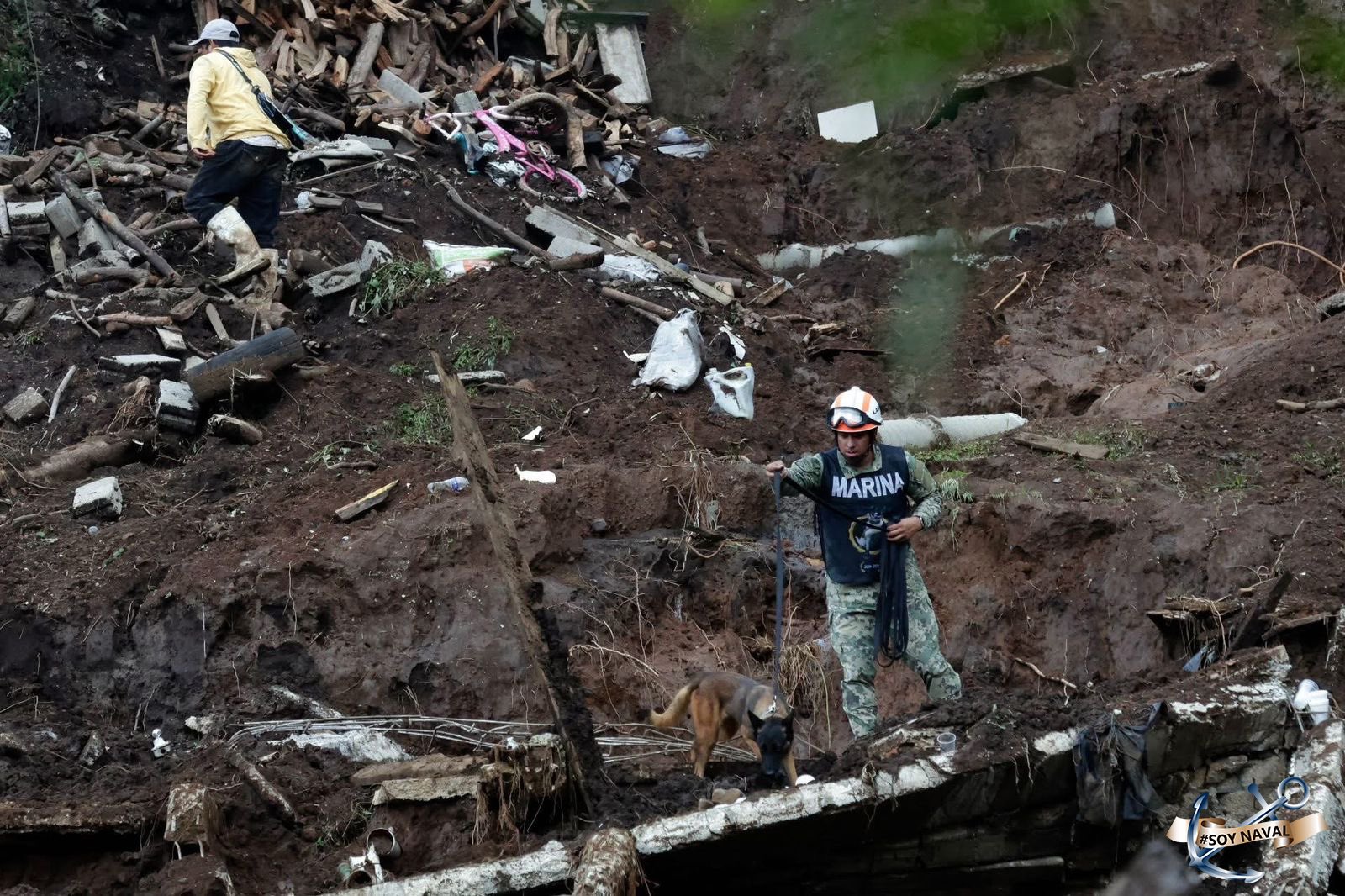Heavy rains and storms cause devastating flooding and landslides in Mexico

Heavy rain beginning on Oct. 6 caused one of Mexico’s most devastating disasters in recent history. The torrential rains, fueled by the remnants of Hurricane Priscilla and Tropical Storm Raymond, triggered catastrophic flooding and landslides across five states: Veracruz, Hidalgo, Puebla, Querétaro and San Luis Potosí. The first three were the hardest hit. This AP News photo essay highlights the extent of the damage.
These storms came at the end of the rainy season, when months of rainfall had already swollen rivers and soaked trees and mountains.
Devastating impact on communities
As of Oct. 14, at least 64 people have died and 67 remain missing.
The disaster cut off access to 300 villages, affected over 300,000 people in Veracruz alone, and damaged or destroyed over 100,000 homes in Hidalgo. In Poza Rica, an oil town in Hidalgo state, water reached as high as 13 feet. Facilities owned by the state oil company Pemex may have flooded, depositing oil in homes, vehicles, businesses and roads across the town.
Elsewhere in Hidalgo state, the Cazones River nearly wiped out the 400-person village of Chapula, leaving only a church and a warehouse where people had sought safety standing. This area, part of the Sierra Madre Oriental region, is a mountain range parallel to Mexico’s east coast. It is home to many small and isolated communities; half of all the villages isolated by this disaster are in this state.
The flooding and landslides damaged sections of Mexico’s Federal Highway 132, making it even harder to reach affected communities. As of Wednesday, Oct. 15, only 100 of the 300 cut-off villages had been reached directly, although helicopters had dropped food and water to all communities. Officials warn that the total number of people deceased, injured or otherwise affected will grow as they can reach these villages.
Health centers, schools, and electricity infrastructure were also severely impacted. At the height of the disaster, 263,000 people were without power. Health officials are taking action to prevent dengue, a disease that is common after flooding.
Response and aid
On Oct. 14, Mexican President Claudia Sheinbaum and her team provided an update on the impact of the flooding and highlighted the government’s ongoing assistance to affected communities. At that time, 91% of electric power had been restored, but only 99 of the 385 critical infrastructure issues had been addressed across the five states.
Within 30 municipalities, the government has instituted a “House-to-house Census of Affected Households” to ensure aid reached every affected family, with 4,178 households registered so far. President Sheinbaum “said her administration will not spare resources to help the victims and rebuild affected areas.”
Despite this, some people say they haven’t received any government aid. Several individuals in hard-hit Poza Rica, in Veracruz, say they haven’t received any support yet. El País newspaper reported, “In this area, one of the most affected by the floods, disaster is as present as if the waters had risen just last night.”
How you can help
The October 2025 floods in Mexico have destroyed schools, health care facilities and other essential services, leaving hundreds of thousands of people without shelter, clean water and other necessities. This level of destruction will require intensive recovery support for hundreds of communities.
While the government has mobilized significant resources, the scale of the disaster demands sustained attention and international solidarity. Marginalized communities, already facing systemic challenges, will need long-term support to rebuild and recover.
Donors can help by:
- Giving cash. As with most disasters, experts recommend monetary donations, as they allow for on-the-ground agencies to direct funds to the most significant area of need, support economic recovery, and ensure donation management does not detract from disaster recovery needs and quickly re-establishing access to basic necessities.
- Supporting immediate and long-term needs to help survivors recover now and better withstand future disasters.
- Giving to locally led humanitarian and aid entities whenever possible. These organizations are vital to long-term equitable recovery in communities after a disaster.
Join CDP’s effort to support Mexico’s recovery through our Global Recovery Fund.
